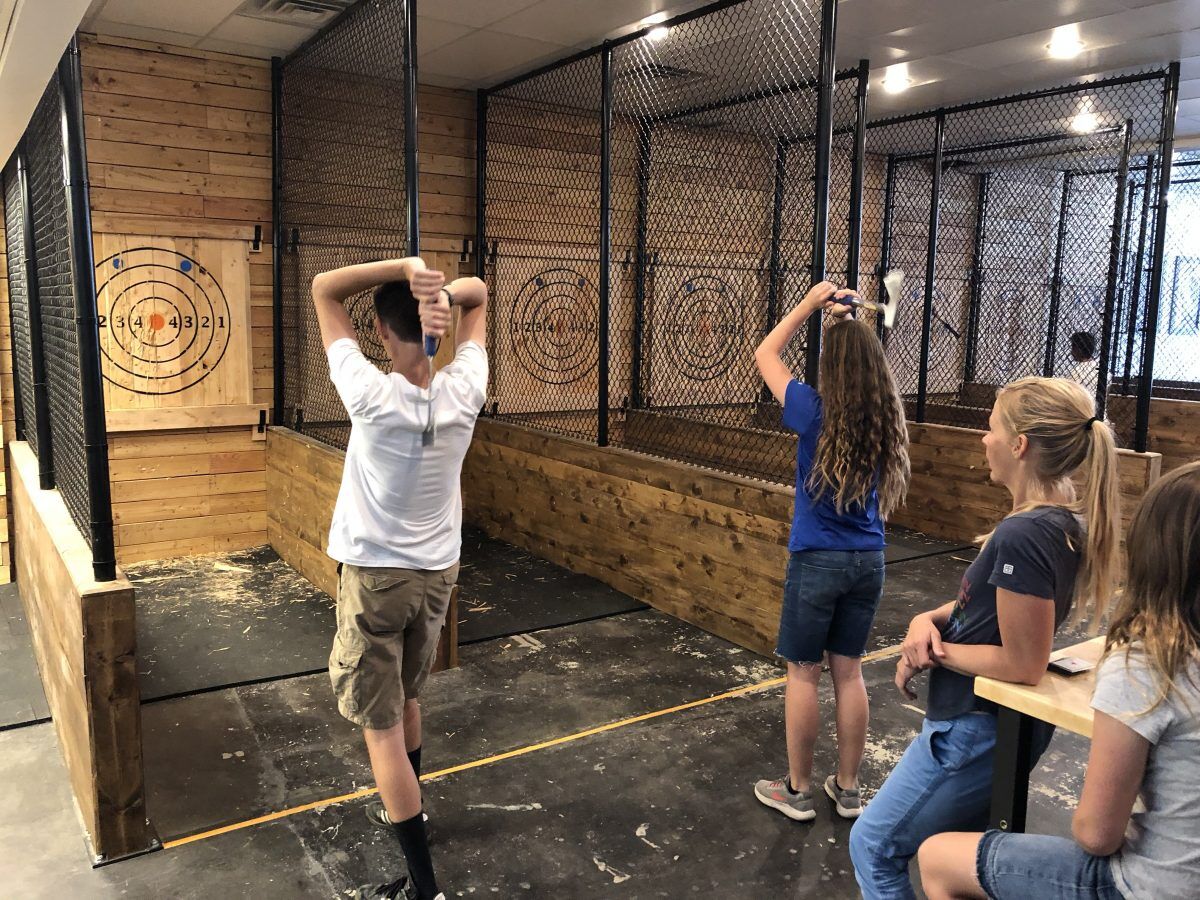Axe Throwing Denver: Memorable Corporate Occasions and Team Building
The Enjoyable of Axe Throwing: Exactly How This Sport Incorporates Skill and Adrenaline for a Fun Time
Axe throwing has arised as an astounding sport that masterfully intertwines the requirement for specific skill with the thrill of adrenaline, offering individuals a appealing and unique experience. The act of hurling an axe in the direction of a target demands focus and strategy, simultaneously promoting an ambience of camaraderie and pleasant rivalry.
The Beginnings of Axe Throwing
Axe tossing, a recreational activity that has actually acquired significant popularity in recent years, traces its roots back to old times. The earliest documents of axe use in competitive contexts are located among the Celts and Vikings, who threw axes for sport as well as in combat training.
Medieval European warriors, particularly throughout the Center Ages, exercised axe tossing as component of their martial training. The Francisca, a type of throwing axe used by the Franks, ended up being iconic for its lethal precision. This traditional tool was made to be tossed at adversary shields and shield, showcasing its twin energy in both sport and fight.
In more current history, axe throwing saw a resurgence in the logging camps of North America in the 19th and 20th centuries. Lumberjacks would take part in friendly competition, checking their accuracy and strength by focusing on wood targets. This advancement from a survival ability to an entertainment activity has paved the means for its modern revival, with devoted places and organizations now commemorating the sport worldwide.
Equipment You Need
Recognizing the abundant history of axe tossing improves the recognition of the sporting activity's modern iteration. Central to this thrilling task is the devices, which is essential for both safety and efficiency. The key tool is, of course, the axe. For affordable and entertainment axe tossing, one of the most generally utilized kind is the hatchet, normally weighing between 1.25 to 2 pounds with a deal with size of about 16 inches. The axe should have a sharp, well-kept blade and a manage made from resilient timber or composite product, guaranteeing a great hold and equilibrium.
Just as essential is the target. Guideline targets are created from timber, with softwood ranges like pine or cottonwood being preferred for their capability to take in and hold the axe. The target is usually split right into five concentric circles, each with a certain factor value, to facilitate scoring.
Security gear, however frequently overlooked, is important. Safety handwear covers can improve hold and stop blisters, while closed-toed footwear are a must to secure feet from gone down axes (axe throwing denver). Finally, a well-lit, spacious throwing area, total with security obstacles, ensures a controlled environment where participants can focus on developing their abilities.
Standard Techniques Explained
Grasping the basic techniques of axe throwing is necessary for both safety and proficiency. The leading hand needs to be positioned directly listed below the axe head, while the non-dominant hand sustains the end of the manage.
Next, focus on the position. Stand with your feet shoulder-width apart, ensuring your body is stabilized. Your leading foot must be somewhat onward, lining up with your target. This positioning aids in maintaining security and routing power precisely in the direction of the target.

Security First
Making certain safety and security in axe throwing is critical to producing a delightful and injury-free experience. Precaution begin with the place layout. A well-designed axe tossing center attributes clear demarcations in between tossing lanes, durable backgrounds to capture stray axes, and non-slip flooring to protect against mishaps. In addition, appropriate lights is essential to aid individuals preserve visual accuracy and spatial understanding.
Benefits of Axe Throwing
Axe tossing offers a myriad of advantages that prolong past straightforward recreation. Physically, it provides a full-body exercise, involving muscle mass in the arms, shoulders, back, and core. The recurring movement of throwing the axe also improves hand-eye sychronisation and fine motor abilities. For those looking to improve their overall physical fitness, axe throwing can offer as a engaging and vibrant kind of exercise.
Emotionally, axe tossing needs precision, emphasis, and strategy, making it an exceptional means to hone cognitive abilities. The focus needed to strike the target can offer as a form of mindfulness, enabling individuals to clear their minds and lower stress. This psychological interaction can be specifically advantageous in helping individuals create better analytic skills and psychological durability.
Socially, axe throwing is typically enjoyed in group setups, cultivating team-building and friendship. Whether as part of a corporate occasion or a casual getaway with close friends, the sport urges interaction and collaboration. Additionally, the common experience of learning and boosting together can strengthen partnerships and create lasting memories.
Verdict

The earliest records of axe usage in competitive contexts are located amongst the Celts and Vikings, who tossed axes for sport as well as in fight training. Release the axe when your hands are roughly at eye level, allowing the axe's all-natural turning to lead it towards the target.
A properly designed axe throwing center functions clear separations between throwing lanes, durable backgrounds to capture stray axes, and non-slip flooring to protect against mishaps. Participants should be advised on the correct home means to handle and throw the axe, highlighting controlled, purposeful movements over strong throws.
In summary, axe tossing stands out as a sport that masterfully incorporates precision, ability, and adrenaline.